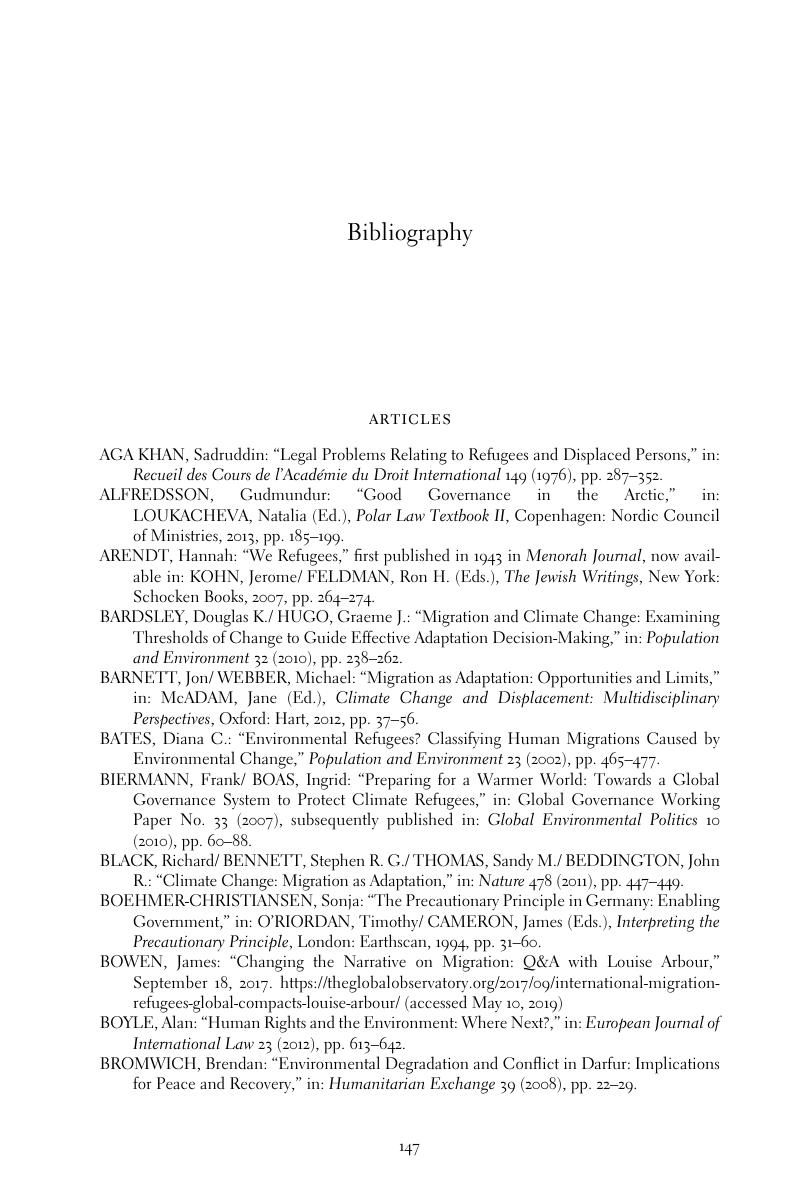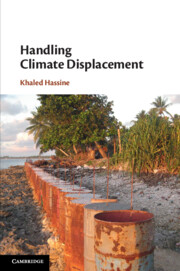Book contents
- Handling Climate Displacement
- Handling Climate Displacement
- Copyright page
- Dedication
- Epigraph
- Dedication
- Contents
- Foreword
- Preface
- Acknowledgments
- Author’s Note
- Requiescat in Pace
- Abbreviations
- Prologue
- 1 Research Framework
- 2 Connecting the Dots
- 3 Protection Challenges and Policy Options
- 4 A Framework for Handling Climate Displacement: The Peninsula Principles
- Conclusion
- Bibliography
- Annex
- Index
- References
Bibliography
Published online by Cambridge University Press: 08 August 2019
- Handling Climate Displacement
- Handling Climate Displacement
- Copyright page
- Dedication
- Epigraph
- Dedication
- Contents
- Foreword
- Preface
- Acknowledgments
- Author’s Note
- Requiescat in Pace
- Abbreviations
- Prologue
- 1 Research Framework
- 2 Connecting the Dots
- 3 Protection Challenges and Policy Options
- 4 A Framework for Handling Climate Displacement: The Peninsula Principles
- Conclusion
- Bibliography
- Annex
- Index
- References
Summary

- Type
- Chapter
- Information
- Handling Climate Displacement , pp. 147 - 173Publisher: Cambridge University PressPrint publication year: 2019



